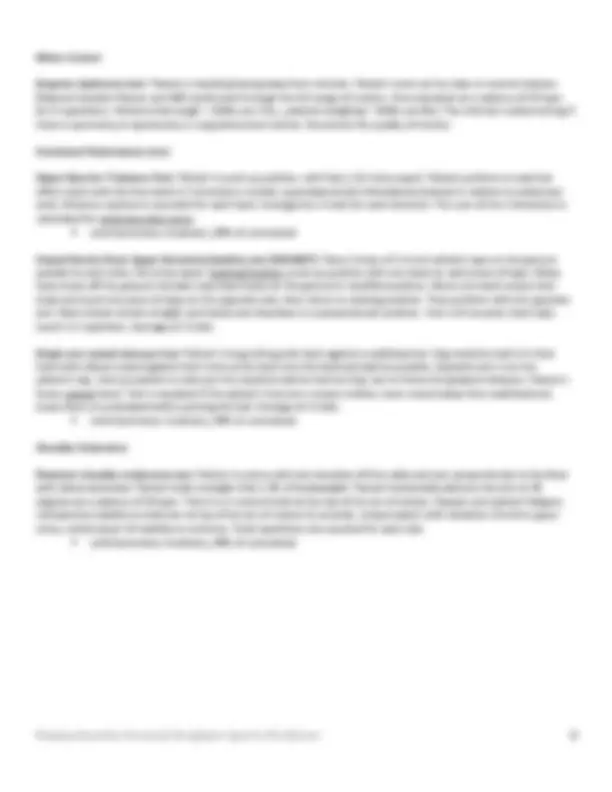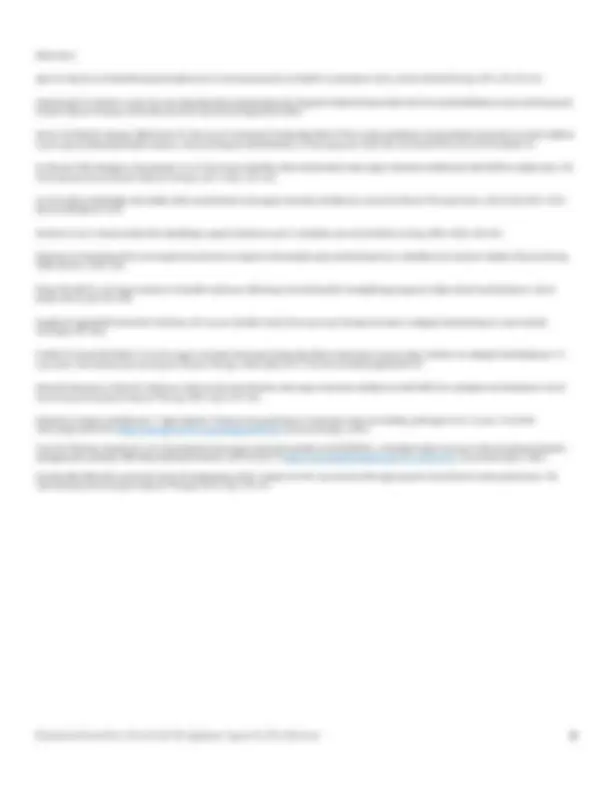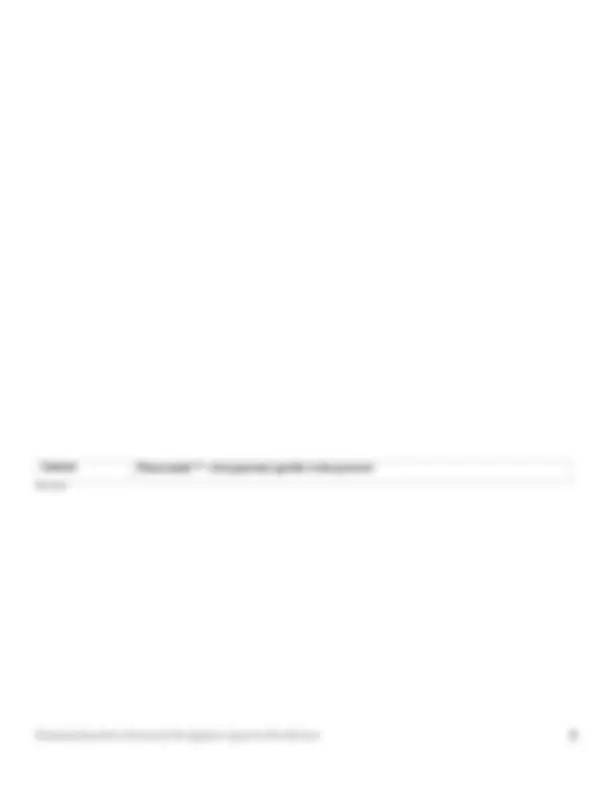





Study with the several resources on Docsity

Earn points by helping other students or get them with a premium plan


Prepare for your exams
Study with the several resources on Docsity

Earn points to download
Earn points by helping other students or get them with a premium plan
Community
Ask the community for help and clear up your study doubts
Discover the best universities in your country according to Docsity users
Free resources
Download our free guides on studying techniques, anxiety management strategies, and thesis advice from Docsity tutors
The Upper Extremity Functional Assessment, a comprehensive test designed to evaluate the upper extremity following surgery or injury. The assessment covers Range of Motion (ROM), proprioception, strength, endurance, motor control, and functional testing. Recommended standards and procedures for each test are provided.
What you will learn
Typology: Exercises
1 / 5

This page cannot be seen from the preview
Don't miss anything!




The upper extremity functional assessment is designed to test the upper extremity following surgery or injury to determine the patient’s readiness to return to sport. The assessment addresses ROM, proprioception, strength, endurance, motor control and functional testing. Descriptions of each test with recommended standards is found in the back. The assessment should be utilized once patient has completed the appropriate rehab and has been cleared by physician. Patient Name:__________________________________________________ MRN:_________________________________ __________ Injury/Surgery:________________________________________________ Date of Injury/Surgery:_________________ _______________ Concomitant Injuries/Procedures:____________________________________________________________________________________ _____________ Operative Limb Non-operative limb Limb Symmetry Index Passive Range of Motion: ER- 0 - IR at 90° ABD - 0 - - 0 - - Joint Position Sense – Mid range (Avg 3 trials each limb) Joint Position Sense – end range (Avg. 3 trials each limb) External Rotation Strength (Avg of 3 trials) Handheld Dynamometer In scapular plane In 90° ABD Eccentric ER in scapular plane Internal Rotation strength (Avg/3 trials) Handheld dynamometer In scapular Plane In 90° ABD Ratio of ER/IR in scapular plane Ratio of ER/IR in 90° ABD Periscapular Strength (Avg/3 trials) Middle Trapezius Lower Trapezius Motor Control Scapular Dyskinesis Test Symmetry: Yes or No Functional Performance Tests (Avg/3 trials) Upper Quarter Y-Balance Closed Kinetic Chain Upper Extremity Stability Males: > 21 Yes or No Females > 23 Yes or No
Single arm seated shot-put test Shoulder Endurance Posterior shoulder endurance test Cleared for sport activities: Yes No Recommendations:
Examiner: _________________________________________________________________________________________ Joint Position Sense: Patient in supine. Arm ABD to 90 degrees with elbow flexed 90 degrees. Patient’s eyes closed, move the patient’s arm passively to an angle of either ER or IR, measure that angle. Then passively move the shoulder through ER and IR, then ask patient to actively reproduce the angle measured. Repeat at various angles for 3 trials and record for both mid-range and end range.
References: Ager LA, Roy JS, et al. Shoulder proprioception: how is it measured and is it reliable? A systematic review. Journal of hand therapy. 2017; 30: 221-231. Chmielewski TL, Martin C, Lentz TA, et al. Normalization Considerations for Using the Unilateral Seated Shot-Put Test in Rehabilitation. Journal of Orthopaedic & Sports Physical Therapy. 2014;44(7):518-524. doi:10.2519/jospt.2014. Davies GJ, Wilk KE, Irrgang J, Ellenbecker TS. The use of a Functional Testing Algorithm (FTA) to make qualitative and quantitative decisions to return athletes back to sports following shoulder injuries. Clinical Orthopedic Rehabilitation: A Team approach. 2018. Doi: 10.1016/b978- 0 - 323 - 39370 - 6.00037-8. De Oliveira VMA, Pitangui A, Nascimento V, et al. Test-retest reliability of the closed kinetic chain upper extremity stability test (CKCUEST) in adolescents. The International Journal of Sports Physical Therapy. 2017; 12(1): 125-132. Lee D-R, Kim LJ. Reliability and validity of the closed kinetic chain upper extremity stability test. Journal of Physical Therapy Science. 2015;27(4):1071-1073. doi:10.1589/jpts.27. McClure P, et al. A clinical method for identifying scapular dyskinesis, part 1: reliability. Journal of athletic training. 2009; 44(2): 160-164. Michener LA, Boardman ND, et al. Scapular muscle tests in subjects with shoulder pain and functional loss: reliability and construct validity. Physical therapy. 2005; 85(11): 1128-1138. Moore SD, Uhl TL, et al. Improvements in shoulder endurance following a baseball specific strengthening program in high school baseball players. Sports health. 2013; 5(3): 233-238. Pontillo M, Spinelli BA, Sennett B. Prediction of In-season shoulder injury from preseason testing in Division I collegiate football players. Sports Health. 2014;6(6): 497-503. Pontillo M, Sennett BJ, Bellm E. Use of an upper extremity functional testing algorithm to determine return to play readiness in collegiate football players: A case series. International Journal of Sports Physical Therapy. 2020;15(6):1141-1150. doi:10.26603/ijspt Roush JR, Kitamura J, Waits MC. Reference values for the closed kinetic chain upper extremity stability test (CKCUEST) for collegiate baseball players. North American Journal of Sports Physical Therapy. 2007; 2(3): 159–163. Schwiertz G, Bauer J, Muehlbauer T. Upper Quarter Y Balance test performance: Normative values for healthy youth aged 10 to 17 years. PLoS ONE. 2021;16(6): e0253144. https://doi.org/10.1371/journal.pone.0253144. Accessed on July 1, 2021. Tucci HT, Martins J, Sposito GC, et al. Closed kinetic chain upper extremity stability test (CKKUEST): a reliability study in persons with and without shoulder impingement syndrome. BMC Musculoskeletal disorders. 2014;15(1):1-9. http://www.biomedcentral.com/1471-2474/15/1. Accessed on July 1, 2021. Westrick RB, Miller JM, Carrow SD, Gerber JP. Exploration of the Y-balance test for assessment of the upper quarter closed kinetic chain performance. The International Journal of Sports Physical Therapy. 2012; 7(2): 139-147.
Contact (^) Please email *** with questions specific to this protocol References